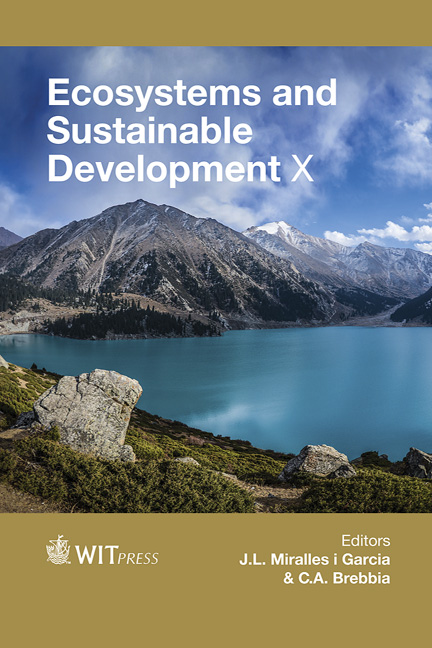Effect Of Drought Stress On Mungbean (Vigna Radiata L.) Under Arid Climatic Conditions Of Saudi Arabia
Price
Free (open access)
Transaction
Volume
192
Pages
9
Page Range
185 - 193
Published
2015
Size
290 kb
Paper DOI
10.2495/ECO150171
Copyright
WIT Press
Author(s)
A. Ahmad, M. Muhammad Selim, A. A. Alderfasi, M. Afzal
Abstract
Water limitation is undoubtedly a critical environmental constraint hampering crop production in arid and semiarid areas. The present study was conducted to assess the water deficit stress consequences of yield components and water use efficiency (WUE) in mungbean. A field experiment was conducted at Educational Farm, Crop Production Department, College of Food and Agriculture Sciences, Kind Saud University, Saudi Arabia during 2012–2013. The trial was comprised of four irrigation intervals viz. (3, 5, 7 and 9 day intervals) as well as three mungbean genotypes; Kawmay-1, VC-2010 and King. The experiment was arranged under split plot design with irrigation as the main plot and genotype as subplot treatment, and replicated thrice. Plant height, 100 seed weight, biological yield, seed yield, harvest index and WUE were recorded at harvesting. Results revealed that a decrease in irrigation had significantly hampered all the studied parameters except WUE. The differences found among mungbean genotypes were significant. Whereas irrigation-genotype interaction was significant for seed yield, harvest index and WUE. Plant height, shoot weight and biological yield were recorded as non-significant for irrigation-genotype interaction. The minimum irrigation interval (3 days) produced the maximum values, while VC-2010 comparatively performed best under low irrigation levels. It is concluded that mungbean may be successfully adopted under the Saudi Arabian climate, but it needs frequent irrigation. However, genotypic variations are a hope to developing improved varieties with a higher WUE.
Keywords
mungbean, irrigation intervals, water use efficiency, genotypes, yield





